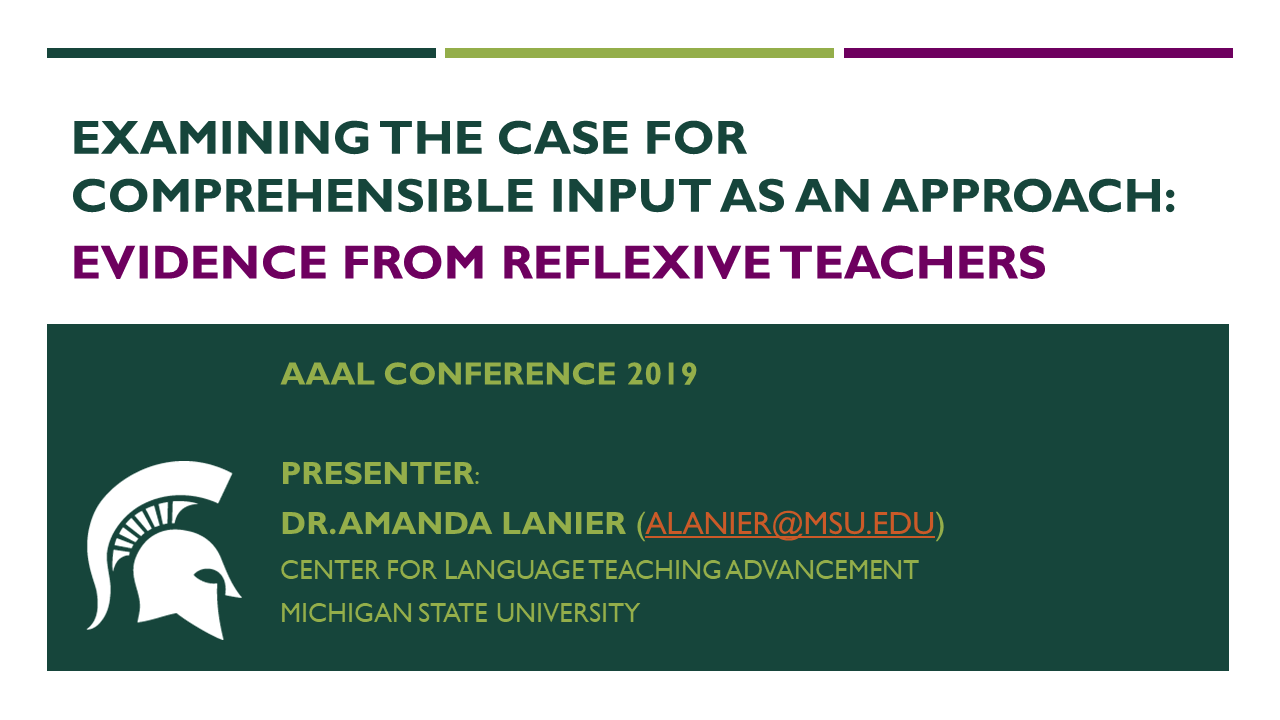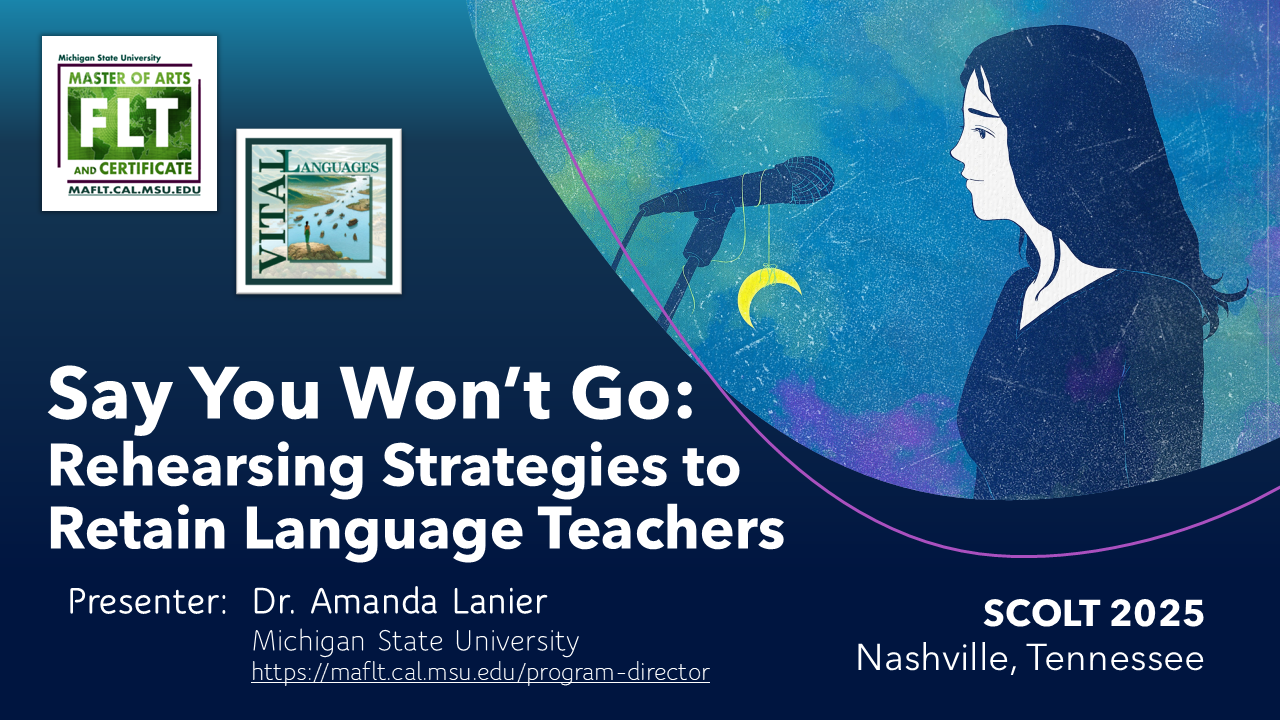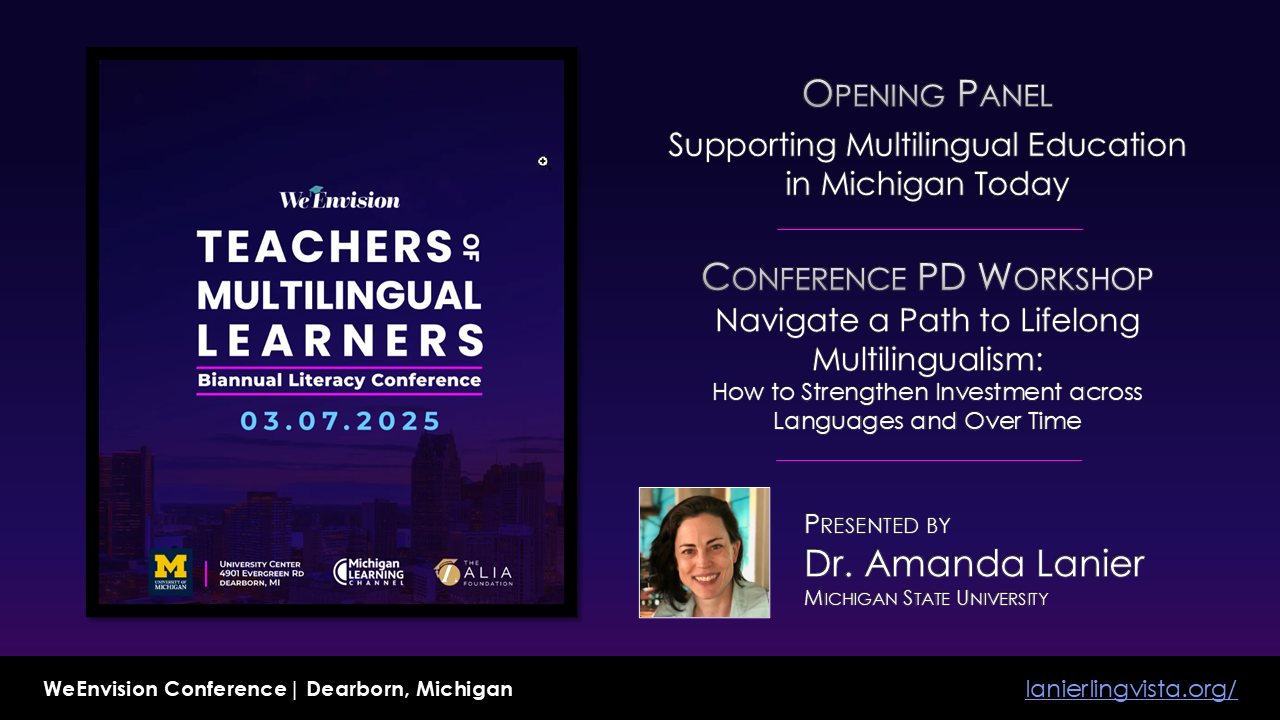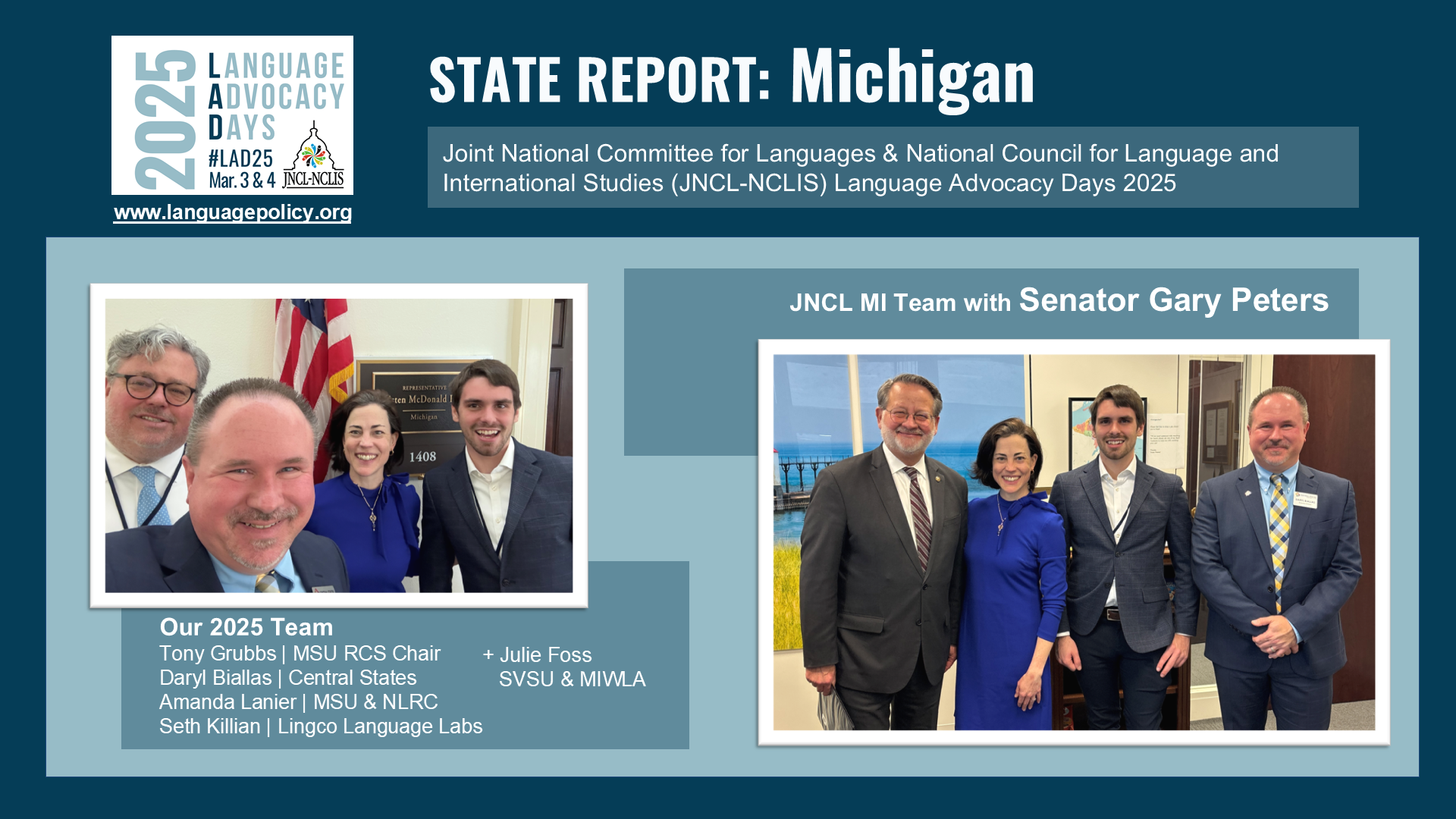Presentation in March 2019 in Atlanta, Georgia at the annual meeting of the
American Association for Applied Linguistics
Examining the Case for Comprehensible Input as an Approach: Evidence from Reflexive Teachers
This presentation shares results from a multi-year project involving case studies of several language teachers and collaborative inquiry on their teacher development as a result of their encounters with and efforts to use TPRS and comprehension-based approaches to language teaching. Rather than making the claim that comprehension-based approaches are more or less effective than other methods of language teaching, this study considers the communities of practice that arose around this approach and the differences in teacher cognition and teacher learning that I observed in my work as a language teacher educator and then further explored in this project.
Session Description
In recent years, the pedagogical method known as TPRS (Teaching Proficiency through Reading and Storytelling) has profoundly influenced foreign language teachers across the U.S. Ostensibly we are in a “post-method condition” (Kumaravadivelu, 2001), but passionate adherents attend training sessions, network via social media, write and share curricula and classroom texts, and regularly present at national conferences.
Although practitioners consider TPRS the heir to Krashen’s Natural Approach and elevate Comprehensible Input (CI) from an SLA theory (Gass, 1997) to the level of a method, scholarly journals in applied linguistics have been virtually silent on its effectiveness or its impact on teaching and learning.
This teacher cognition study (Burns, Freeman, & Edwards, 2015) focuses on three in-service language teachers enrolled in a methodologically ecumenical graduate program who each explicitly sought to examine and advocate for TPRS/CI as a method. Course projects, written reflections, online discussions, interviews, and classroom artifacts document their pursuit of key questions:
- How well do SLA theories support TPRS/CI compared to other approaches?
- How should we select and sequence the linguistic features to be targeted?
- How can we compare proficiency gains and learner perceptions with traditional classrooms?
As one informant admitted after conducting action research: “While I was confident that comprehensible input [meaning TPRS] was in the best interest of the students… I was strongly biased in that I wanted to validate my classroom practice.” Gradually they realized that TPRS/CI is not a panacea and that the daunting endeavor of validating it would involve defining the parameters of a heterogeneous method, investigating implicit knowledge in live classrooms, and interpreting data objectively.
Results demonstrate the challenges of teacher engagement with research (Borg, 2010) as these teacher-learners strove to reconcile their commitment to TPRS principles and practices with their growing understanding of SLA theories and their implications.




